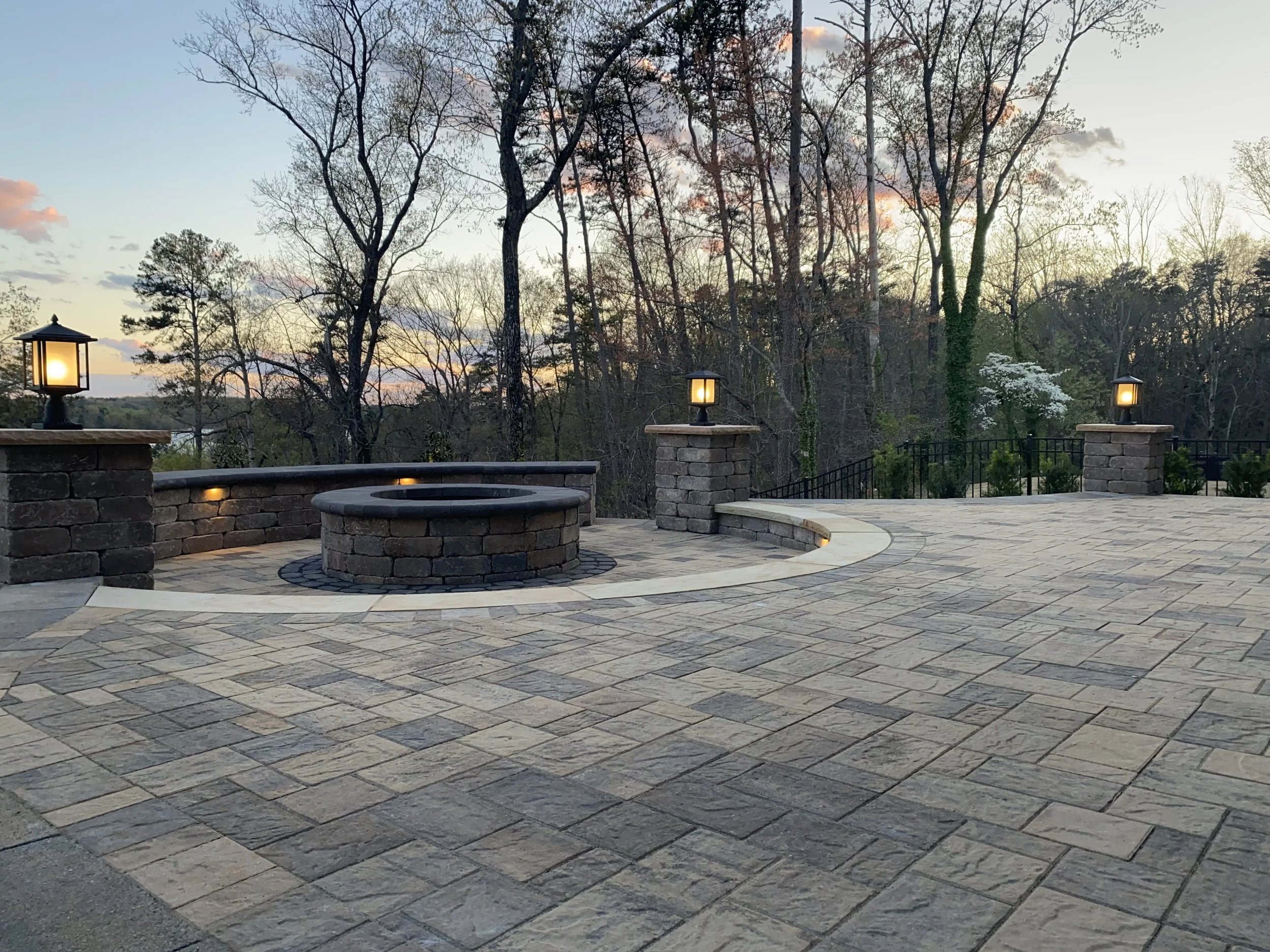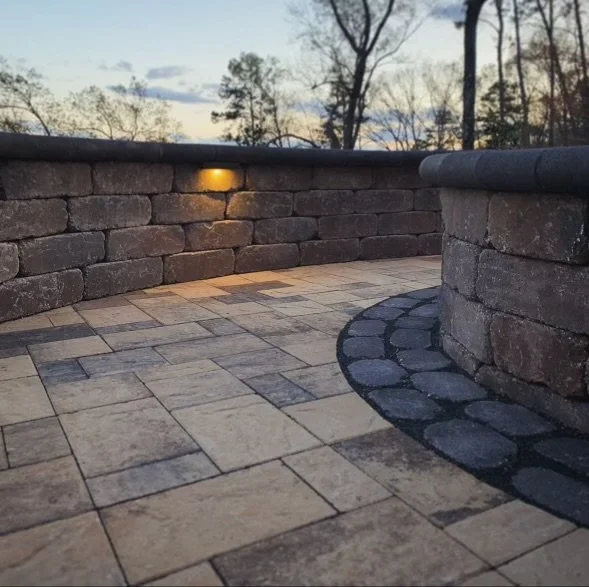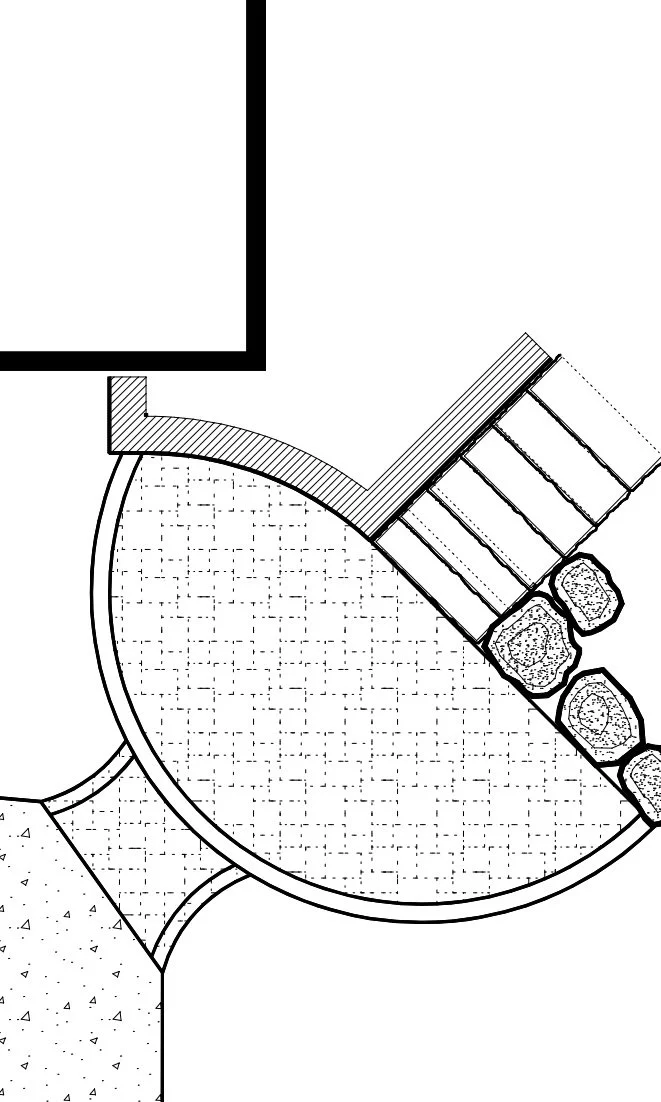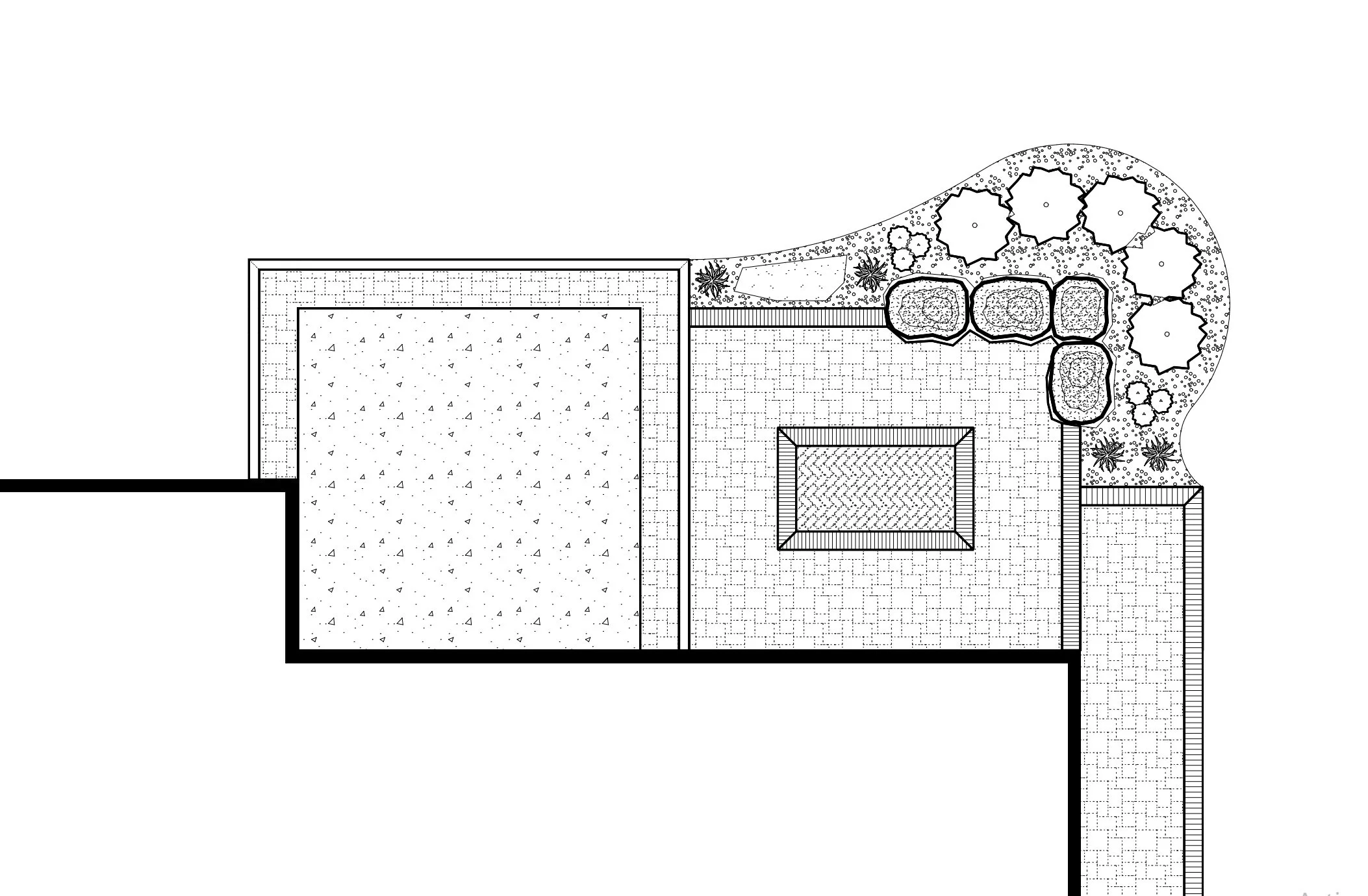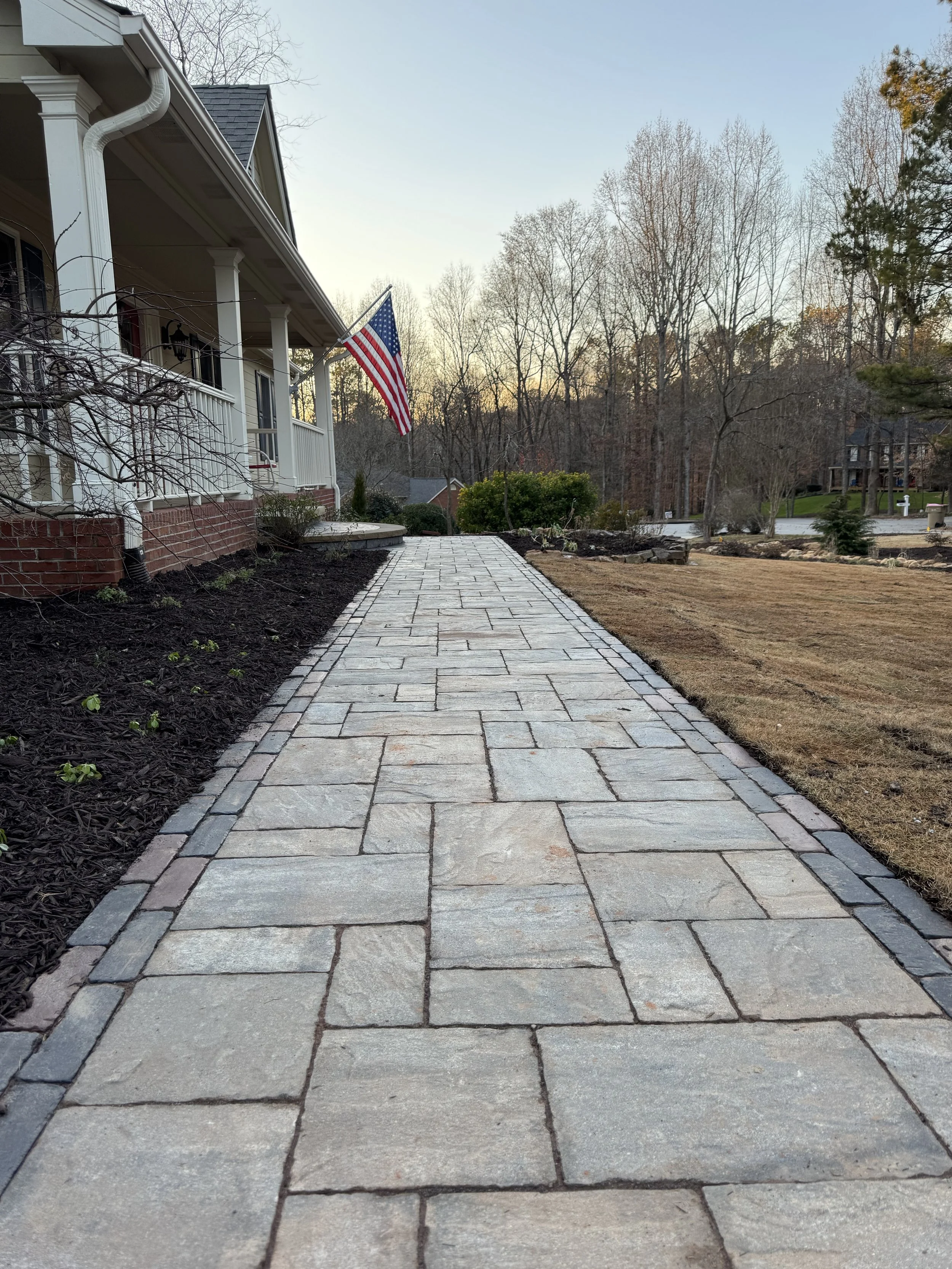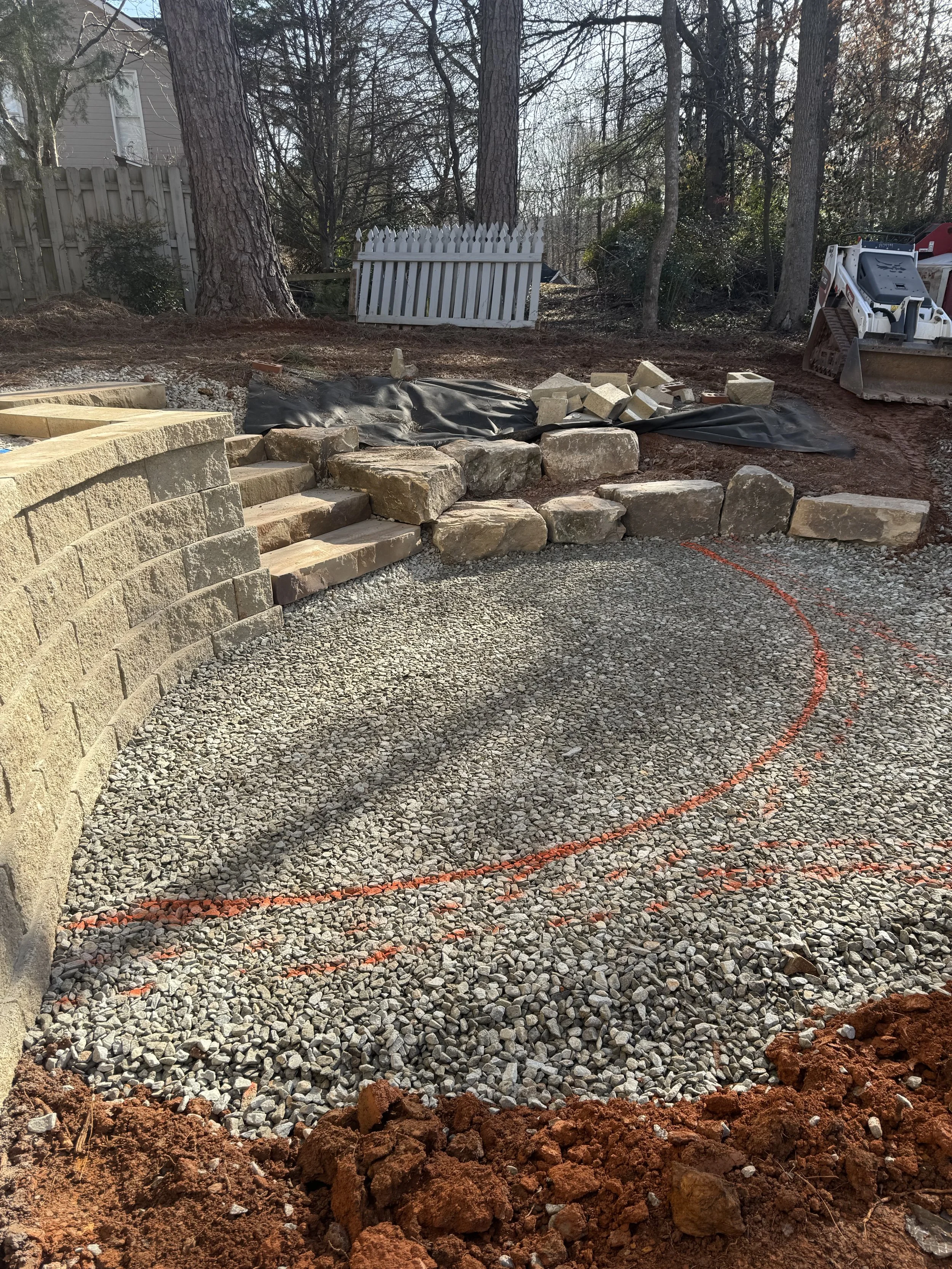Paver Installation
Not all paver installations are created equal. At Southern Crafted Hardscape’s we believe in paving surfaces with not only style and beauty but also in a manner that will last a lifetime. We attribute this to our commitment to exceed standards and never cut corners.
We’re not just talk.
We stand behind our work and our clients. Offering a warranty that would strike panic in “cowboy” contractors, if they were held to the same degree. We offer a minimum five year transferable warranty on pavers installations. In addition to this we only install reputable pavers from manufactures like Unilock that offer a lifetime warranty on their products. We also believe in transparency here at SCH. Below we have outlined exactly how we go about installing pavers.
It All Begins With A Design
It all begins with a design. Nothing is more frustrating than not knowing exactly what you’re paying for or a contractor not accurately predicting the cost associated with your project and needing to come to you for significantly more money just to complete the job.
With a proper design, paired with site visits, we can completely avoid these frustrations. We are not only on the same page in regard to our scope of work but we can also accurately quote the project for you. This also allows us to properly prep the site for your project. Planning where materials and equipment will be staged, what areas of landscaping may be impacted, temporary drainage solutions, and of course physically drawing out the design onsite for you to “step into” before we break ground.
Whether we’re doing a full blown outdoor transformation or a simple patio, we strive for the entire process to be as smooth as possible!
Base Preparation
Ask any seasoned paver contractor and they’ll tell you base preparation is the key to a long lasting install. Just as a failure in the foundation of your home is going to cause serious issues, a failure in paver base will ruin what may have been a perfect install.
There are many considerations when planning for a proper base for pavers. These are some that we discuss and inspect while onsite in our consultations and design phase.
Surrounding Soil Type
Sub Base Percolation Rate
Sub Base Hardness
Paver Application
Elevations
Drainage
Existing and Future Landscaping
Our Standard Base
(From Top): Paver, Setting Bed, Base, Separation Fabric, Sub Base.
As noted above, there are many considerations that may influence what is required for a paver base. But we do follow strict minimums on any paver project that we have outlined here.
We can break down everything beneath the pavers into three sections.
Sub Base
Base
Setting Bed
The sub base is the soil beneath our base material and where our base depth begins. Our base depth may need to be modified due to the sub bases level of hardness, permeability and quality. In practice we are very careful in our excavation to not over dig our base, as natively compacted soils are the best to build on. Any areas that may have been over dug will be corrected with base material and/or native soils and then properly compacted with speciality equipment to ensure the sub base plane is uniform.
The base is the foundation for our pavers. In most applications we use #57 Stone. This is a clean 3/4”-1.5” stone. The minimum base we use is 6” which is settled (stone does not compact) with a plate tamp every three inches. This base however could be upwards of 36” depending on the applications. It is also our standard practice to use a separation fabric between our sub base and base. This not only increases the rigidity of our system but also ensures any settling is done uniformly and keeps are our stone clean. This fabric is also wrapped upwards to create a “pouch”. In addition to this we may also opt to use specialty earth stabilizing geo-grids designed for pavers. However this is typically reserved for paver applications that will be subject to heavy loads such as driveways.
Lastly we have our setting bed. This is a very uniform bed made of smaller #89 stone (1/8-1/4”) that is meticulously screeded to provide a level and uniform bed to set our pavers on. We keep this bed to an even 1” whereas some choose to set their paver fall (slope built into area for water drainage) with the setting bed we opt to build any fall required into our actual base to ensure we don’t exceed recommended setting bed depths. Exceeding the recommended depths (<1.5”) weakens the foundation of our pavers. Though it may take longer to set fall with our actual base material it is the correct and strongest method.
-
It all begins with an idea. Maybe you want to launch a business. Maybe you want to turn a hobby into something more. Or maybe you have a creative project to share with the world.
-
It all begins with an idea. Maybe you want to launch a business. Maybe you want to turn a hobby into something more. Or maybe you have a creative project to share with the world.
-
It all begins with an idea. Maybe you want to launch a business. Maybe you want to turn a hobby into something more. Or maybe you have a creative project to share with the world.

